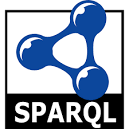Discussion
Discussing the need for a new CAA Special Interest Group on chronological modelling
Thomas Huet, Eythan Levy, Florian Thiery, Allard W. Mees
Introduction
CAA
Computer Applications and Quantitative Methods in Archaeology (CAA)
- annual conferences with > 300 participants every year
CAA Special Interest Groups (CAA-SIG)
 SIG https://caa-international.org/special-interest-groups/
SIG https://caa-international.org/special-interest-groups/
- Complex Systems Simulation
- Computer Programs for Archaeologists
- Mobile GIS
- 3D spatial analysis
- Scientific Scripting Languages in Archaeology
- Semantics and LOUD in Archaeology
- Archaeological Practices and Knowledge Work
- Computationally Modeling Water-based Movement
CAA Special Interest Groups (CAA-SIG)
 SIG https://caa-international.org/special-interest-groups/
SIG https://caa-international.org/special-interest-groups/
- Complex Systems Simulation
- Computer Programs for Archaeologists
- Mobile GIS
- 3D spatial analysis
- Scientific Scripting Languages in Archaeology
- Semantics and LOUD in Archaeology
- Archaeological Practices and Knowledge Work
- Computationally Modeling Water-based Movement
CAA SIG SSLA and Data Dragons
Special Interest Group on Scientific Scripting Languages in Archaeology
Statement of need
Chronological turn

‘Monument druidique près de Gisors’ 1824

Stack of information layer in a GIS
CAA-SIG proposed framework
CAA-SIG workflow
Git, distributed versioning:
 GitHub https://github.com ➡️
GitHub https://github.com ➡️ historical-time
 GitLab https://gitlab.com
GitLab https://gitlab.com
Semantisation
Outputs
Data papers
Facilitate the publication of human-machine readable papers of temporal data

Very unprecise

Very precise
Open talk

S12. Chronological modelling: formal methods and research software  https://github.com/archaeochrono/caa23 CAA23, Amsterdam, 2023
https://github.com/archaeochrono/caa23 CAA23, Amsterdam, 2023
Footnotes
ISO 8601-2
ISO/IEC 9075-15
